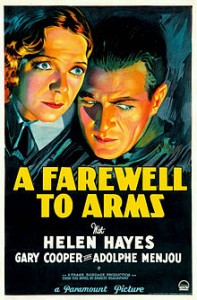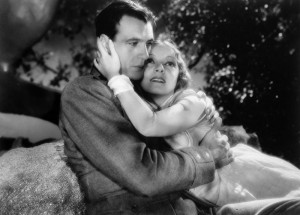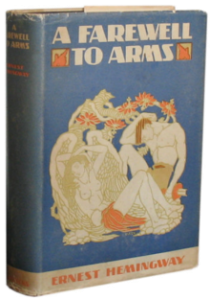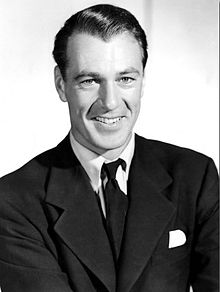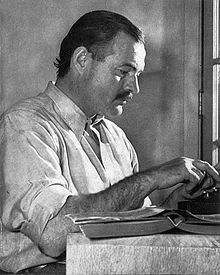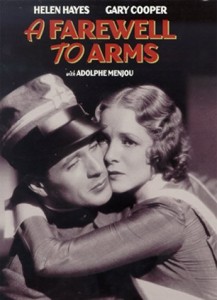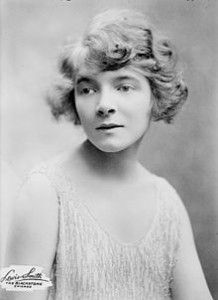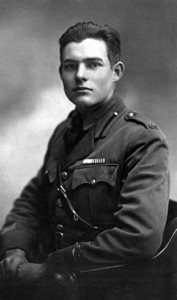A Farewell To Arms **** (1932, Gary Cooper, Helen Hayes, Adolphe Menjou) – Classic Movie Review 1245
Director Frank Borzage in 1932 turns Ernest Hemingway’s complex, famous world-classic 1929 semi-autobiographical novel into a classy and stylish Hollywood romance. It won two Oscars and was nominated for best picture. Gary Cooper stars as the smooth, cynical, hard-drinking Lieutenant Frederic Henry, a young American serving in the ambulance corps of the Italian Army as a driver on the Italian front during World War One.
Through a friend at the local hospital, he meets English nurse Catherine Barkley (played by the tiny, fragile-seeming Helen Hayes), whose fiance has been killed at the Somme. He meets her again on a double date with his Italian army buddy Major Alessandro Rinaldi (Adolphe Menjou) and her nurse friend Helen Ferguson (Mary Phillips).
Later, a flirtatious casual encounter leads to an impetuous one-night stand and, oh my goodness, illicit sex. This leaves Catherine in tears and the couple head over heels in love. But Frederic has to go back to the front and is wounded in the fall-out from a German bombing raid (in the film’s most convincingly staged sequence – it still looks good).
It was an artistic and commercial success, but sad to say that the glories of this early sound film have somewhat faded, with a very studio-based production, models, back projections and ineffective effects making the re-creation of the war in Italy seem shaky and unconvincing.
It still has very considerable charm and appeal though, as an attractive museum piece, and it’s easy to make allowance for its venerable age. Borzage’s sensitive direction still seems imaginative and accomplished, while Charles Lang’s inventive Oscar-winning cinematography still impresses, and so does Oscar-winning Franklin Hansen and Harold Lewis’s sound recording. Oliver H.P. Garrett and Benjamin Glazer’s screenplay has some good, convincing dialogue, and they do their job effectively of turning the then modern novel into an old-style romantic drama film.
Cooper and Hayes make an odd couple, he hugely tall and gangly, not seeming very bright, she ridiculously tiny, birdlike and old-looking way before her time, with the kind of beauty the appealed in the 1920s but is long out of style. They don’t really seem made for each other but nevertheless they do share a strange chemistry.
Cooper looks suitably pained and dashing, though he is a little on the over-earnest, bland, matinee idol side, perhaps trading too much on his good looks. Top-billed Hayes’s authoritative performance is brisk and feisty though not very sexy and faintly disturbing (especially when she suddenly slaps Cooper), so you can’t quite understand the attraction. Both of the stars show traces of the silent-movie style acting from the era they grew up in.
This leaves the realistic, but commanding Menjou to impress most of the players, even with his stereotype Italian accent and attitudes the script has given him. The scenes with Cooper and Menjou are the best in the film, the snappiest and most convincing.
The film reduces Hemingway’s novel to more or less just a Hollywood romance in an exotic foreign, wartime setting, while the novel is so much more. No wonder he was contemptuous of the film. Based on his own experiences serving in Italy, the book turned Hemingway (July 21 1899 – July 2 1961) into a major name in world literature.
It’s hard not to see Frederic as an idealised portrait of him, and others of the characters were based on real people he knew. He tried out 47 different endings, saying it was simply a problem of ‘getting the words right’.
Paramount studios had the same problem: they didn’t fancy the tragic ending and reshot a happier one for the film’s American release. Sophisticated Europeans got the original one from the book, which is the one in the 2014 newly restored version. Running the full 89 minutes, this beautiful-looking restored version is based on an original nitrate print belonging to producer David O Selznick, who bought the remake rights in 1955 and produced his own version in 1957 with Rock Hudson, Jennifer Jones and Vittorio De Sica. This one runs 151 minutes.
The 1932 film fell into a pit of problems over censorship as it was remarkably frank about sex for its day. Later it fell foul of the Legion of Decency and the Production Code Administration, which condemned its suggestive dialogue, lustful kissing, illicit sex and lack of moral compensation.
When the film was re-released in 1938, 12 minutes of ‘objectionable’ dialogue were cut and the film has long circulated in this hacked form. So it’s doubly good to have it properly and fully restored by Lobster Films in 2014. In the UK the BFI is re-releasing it in cinemas to commemorate the 100th anniversary of the outbreak of WW1.
In 1960 the film entered the public domain in the US through the failure of United Artists to renew its copyright registration in the 28th year after publication. The original Broadway play version, adapted to stage by Laurence Stallings, starred Glenn Anders and Elissa Landi at the National Theatre and ran only 24 performances in September and October 1930.
The title is taken from a poem by 16th-century English dramatist George Peele.
The 1996 film In Love and War, directed by Richard Attenborough and starring Sandra Bullock, depicts Hemingway’s life in Italy as an ambulance driver in the events before his writing of A Farewell to Arms.
Helen Hayes (October 10 1900 – March 17 1993) enjoyed a career spanning almost 80 years, gaining her the nickname First Lady of the American Theatre. She was one of only 12 people who have won an Emmy, a Grammy an Oscar and a Tony Award.
(C) Derek Winnert 2014 Classic Movie Review 1245
Link to Derek Winnert’s home page for more film reviews: http://derekwinnert.com/
Hemingway in uniform in Milan, 1918. He drove ambulances for two months until he was wounded.
Hemingway’s 1923 passport photo when he lived in Paris with his wife Hadley and worked as a journalist.
Hemingway bird-hunting at Silver Creek near Picabo, Idaho, January 1959, with Gary Cooper and local resident Bobbie Peterson.

